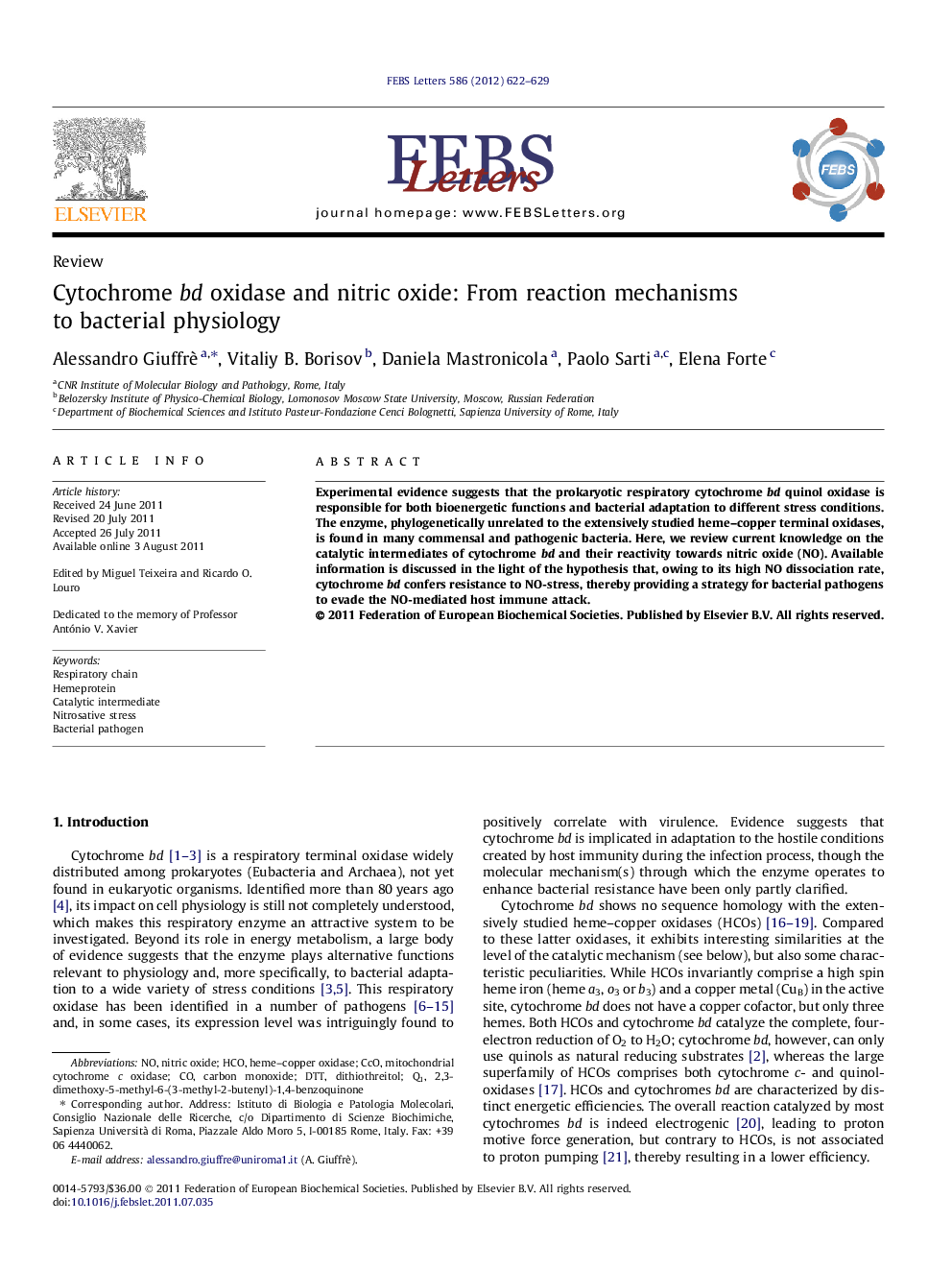| Article ID | Journal | Published Year | Pages | File Type |
|---|---|---|---|---|
| 10871817 | FEBS Letters | 2012 | 8 Pages |
Abstract
Experimental evidence suggests that the prokaryotic respiratory cytochrome bd quinol oxidase is responsible for both bioenergetic functions and bacterial adaptation to different stress conditions. The enzyme, phylogenetically unrelated to the extensively studied heme-copper terminal oxidases, is found in many commensal and pathogenic bacteria. Here, we review current knowledge on the catalytic intermediates of cytochrome bd and their reactivity towards nitric oxide (NO). Available information is discussed in the light of the hypothesis that, owing to its high NO dissociation rate, cytochrome bd confers resistance to NO-stress, thereby providing a strategy for bacterial pathogens to evade the NO-mediated host immune attack.
Keywords
Related Topics
Life Sciences
Agricultural and Biological Sciences
Plant Science
Authors
Alessandro Giuffrè, Vitaliy B. Borisov, Daniela Mastronicola, Paolo Sarti, Elena Forte,
